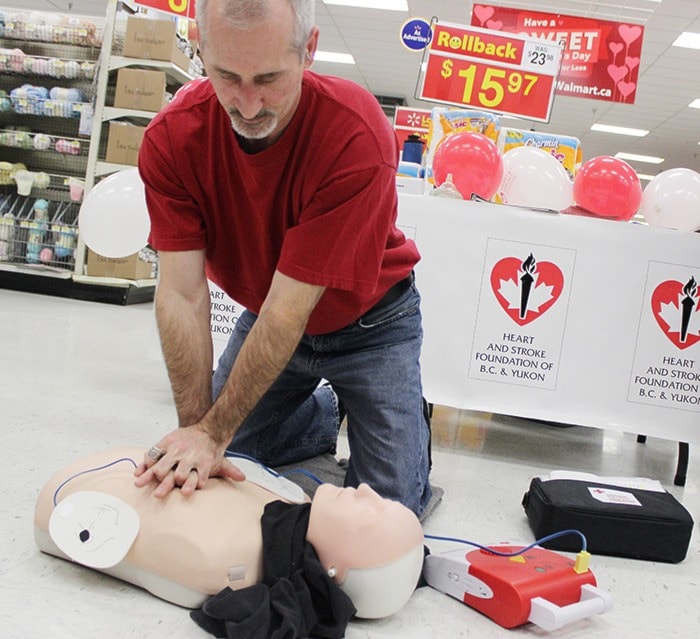It’s simple enough that a child can use one to save a life but still many people feel apprehensive about operating an AED — Automated External Defibrillator.
On Saturday at Chahko Mika Mall, the Heart and Stroke Foundation aimed to familiarize folks with the lifesaving device with a hands-on AED demo.
“Less than 10 per cent of people are willing to touch an AED in an emergency but they’re really simple to use,” said Nancy Liknes, Kootenay area coordinator with the Heart and Stroke Foundation. “We want people to recognize it and be not afraid to use it.”
An AED is a portable device that automatically reads heart rhythms and then applies a shock if necessary to reestablish an effective beat.
Often the AED is located behind glass and posted instructions indicate that someone must be certified to use the device. Liknes explained that is not the case. If it is a true emergency, break the glass and grab the machine. An eight-year-old child has successfully used the AED.
The AED program is a four-year Foundation initiative, sponsored by the Federal Government, to install and train for AED placements across the country. With the incidences of heart attacks increasing to about one every 12 minutes it is important everyone knows how to use them, explained Liknes, “so we really can create more survivors — together.”
“Chances of survival are much higher if you use an AED but you have to do it right away,” she said.
Billie Padavell is a Trail paramedic, Occupational First Aid instructor for Selkirk College who also teaches First Aid for St. John Ambulance and the Red Cross. He was on hand to provide AED and full CPR demonstrations.
“Cells begin to die in four to six minutes so get this on them,” he said. “It’s designed for the lay person. You turn it on and follow the voice prompts.”
The AED voice guides a user through CPR allowing pause to read and assess heart rhythm to determine if a shock is needed. Padavell says CPR is still vital to the life-saving process.
“No matter what, start working the chest. Get the blood moving,” he said. “A lot of people are worried about doing something wrong. You can’t do anything wrong. They’re clinically dead. The AED can shock them back to life.”
In addition to teaching how to use an AED, Liknes said it’s also important that they are easily found if emergency strikes.
“This is one of the things we need to work on — a national registry so we all know where they are,” she said.
This month there are also 500 volunteers making their rounds in the Kootenay raising funds as part of the Foundation’s annual Heart Month Campaign.
